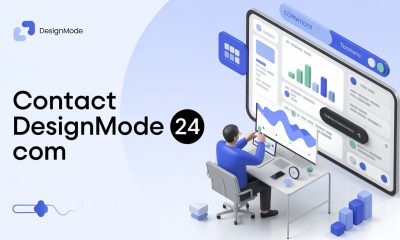Articles
From Rent to Reality: Creating a Financial Roadmap to Your First Home

When considering a move from a rental to real estate, different steps may get you to that point. The process will create challenges, which are often strange and uncertain, especially for long-term financial goals.
Although many people are similar to one another when it comes to owning a house, the steps that are taken before that vary in approach.
Depending upon the situation, planning and preparation can assist in directing the effort towards owning a first home.
Identifying early spending habits and saving gaps
An examination of the current expenditure of funds can provide valuable insight into the funding levels that support housing goals. The pace of the economic process of saving depends on the regularity of the income and expenditure. Over time, some costs may vary or be adjusted to support long-term objectives.
Little tweaks can often lead to different results, especially when looked at over a longer timeline. Checking a bank statement or account summary may bring a pattern to your notice.
While it certainly does not offer precise answers, it usually achieves a general sense of what can be changed. If you slowly start saving more and spending less, it won’t appear obvious at first.
But with time, it will. For a lot of people, this step is the first part of a larger process of preparing to own a home.
Setting realistic housing expectations
Before exploring home ownership, it might be wise to consider what type of housing goal seems realistic. This may vary based on income, family formation, regional pricing, and local preferences. Not every individual requires the same space or location, so expectations must be what is achievable.
Having a clear distinction between what is wanted versus what is possible will lead to fewer problems later. As your income or family requirements change, you might change housing choices.
There are times you may choose to adjust your expectations based on early financial reviews. Some people may be long-term buyers while others may see it as a step one in bigger property plans. While the specific plan may vary, having a few boundaries in mind often leads to better financial decisions later.
Creating a savings routine and budgeting process
The subsequent phase typically involves generating a system through which savings will take place. The procedure may necessitate alterations concerning the allocation and storing of funds. Some people may take to opening up new accounts, while others may set fixed amounts to save every month.
Having a savings goal helps more when it is associated with a bigger purpose, like home ownership. Another part of this step is budgeting, which involves managing both short-term and long-term costs.
Although when individuals categorize their expenditure, they may be able to understand how expenditure leads to the greater goal. This need not be quite perfect, though it ends up shaping up into a habit most of the time.
By continuously reviewing and making small updates to this routine, you could help reach your home down payment or cover unexpected housing-related costs.
Reviewing credit and financial documentation
Checking your credit score and other documents on record with lenders could be another aspect of home planning. This might entail a lookup of credit scores, remaining loans, or former borrowings.
A reduction in the amount of debts that you owe or timely payments, or using credit responsibly can enhance the documents. Going through this information won’t give fast fixes, yet it helps prepare for the upcoming steps. It might also show a problem that needs fixing or clarification.
Location-specific forms or statements may be needed. A financial planner in Henderson, NV or your area can organize financial information for mortgage applications and help strengthen your financial plan. Early documentation helps save delays and enhances the home-buying process.
Exploring mortgage options and support programs
With the financial foundation getting more and more established, you may want to focus on the mortgage types and assistance programs available.
Loan programs could be government-backed loans, lender programs, or local programs. Some home loans may require a specified percentage of a down payment, while others may allow flexibility based on specific criteria. Depending on where and when you buy, first-time buyer programs may be available.
You may also want to understand fixed-rate vs adjustable-rate mortgages during this step of the process. At times, this can involve a plethora of documents and application steps.
Getting prepared on time might just do the trick! You can ask questions and look at various types of sources for a good choice. While the process could take a while, being informed could help support better choices that match long-term financial goals.
Conclusion
Typically, when the process of going from rent to buy is followed step by step, it can suffice to overcome the challenges that may not be easy.
Careful thought regarding costs, expectations, and long-term planning may determine the more orderly conduct of the effort. As you go about the process, you may need to make some tweaks or evaluations along the way.
The exact journey may vary, but drawing up of financial roadmap may support a more equitable journey towards home ownership.
-

 Interview Preps6 months ago
Interview Preps6 months agoWhy Should We Hire You As A Teacher? Practical Answers
-

 Interview Preps6 months ago
Interview Preps6 months agoTop 35 Must Know Greggs Interview Questions & Expert Answers!
-

 Articles1 year ago
Articles1 year agoWhich Skills Are Needed To Work In The Nursery?
-

 Interview Preps4 months ago
Interview Preps4 months agoThe Most Common Questions For Aldi Video Interview
-

 Interview Preps6 months ago
Interview Preps6 months ago10 Most Common Competency Based Interview Questions

















































































































































